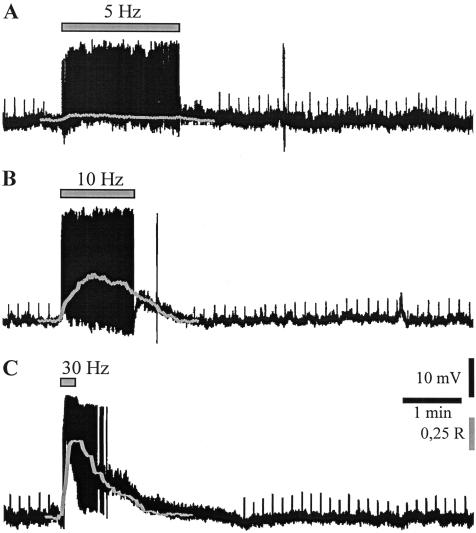Figure 1.
Relationship between frequency of synaptic stimulation, [Ca2+]i elevations, and induction of synaptic plasticity. (A) A conditioning train of synaptic stimulation delivered intrastriatally at 5 Hz for 2 min (gray bar) slightly depolarized the recorded cholinergic interneuron and caused a modest simultaneous increase in [Ca2+]i (gray line). The amplitude of the DPSPs (upward deflections) elicited by the test stimuli after the tetanus was not significantly modified as compared with control responses. R.M.P., 62 mV. (R) Ratio values calculated from pairs of 340 and 380 nm images corrected for background fluorescence. (B) In another neuron, tetanic stimulation at 10 Hz (1 min) depolarized the cell and induced a concomitant [Ca2+]i increase (gray line), without affecting the DPSPs amplitude. R.M.P., 59 mV. (C) In another recording, the protocol of synaptic stimulation at 30 Hz for 15 sec induced a large membrane depolarization and a significant [Ca2+]i elevation (gray line). Long-term modifications of the DPSP amplitude were not observed. R.M.P., 65 mV. Spikes induced by tetanic stimulation are truncated.

